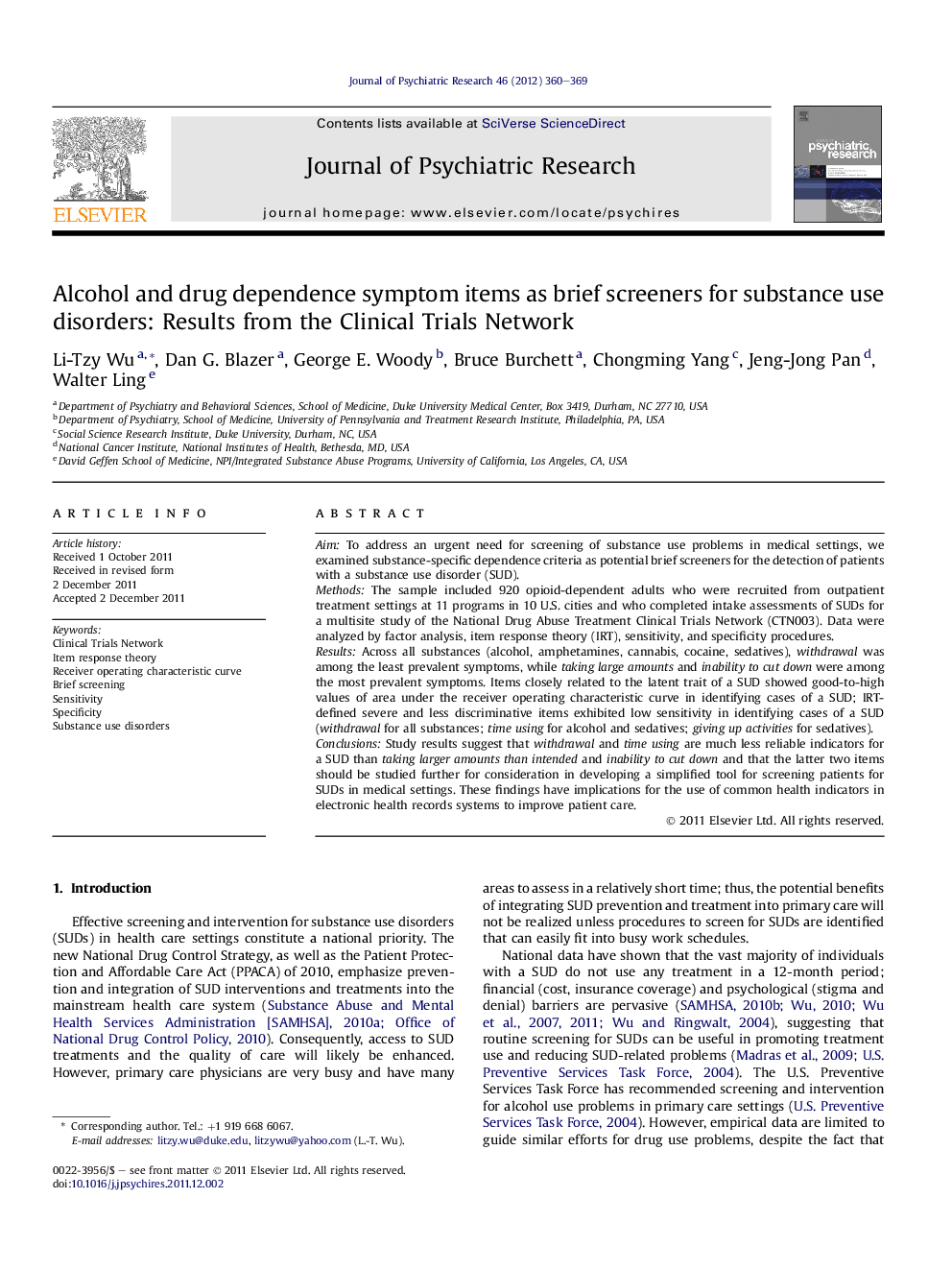| Article ID | Journal | Published Year | Pages | File Type |
|---|---|---|---|---|
| 327090 | Journal of Psychiatric Research | 2012 | 10 Pages |
AimTo address an urgent need for screening of substance use problems in medical settings, we examined substance-specific dependence criteria as potential brief screeners for the detection of patients with a substance use disorder (SUD).MethodsThe sample included 920 opioid-dependent adults who were recruited from outpatient treatment settings at 11 programs in 10 U.S. cities and who completed intake assessments of SUDs for a multisite study of the National Drug Abuse Treatment Clinical Trials Network (CTN003). Data were analyzed by factor analysis, item response theory (IRT), sensitivity, and specificity procedures.ResultsAcross all substances (alcohol, amphetamines, cannabis, cocaine, sedatives), withdrawal was among the least prevalent symptoms, while taking large amounts and inability to cut down were among the most prevalent symptoms. Items closely related to the latent trait of a SUD showed good-to-high values of area under the receiver operating characteristic curve in identifying cases of a SUD; IRT-defined severe and less discriminative items exhibited low sensitivity in identifying cases of a SUD (withdrawal for all substances; time using for alcohol and sedatives; giving up activities for sedatives).ConclusionsStudy results suggest that withdrawal and time using are much less reliable indicators for a SUD than taking larger amounts than intended and inability to cut down and that the latter two items should be studied further for consideration in developing a simplified tool for screening patients for SUDs in medical settings. These findings have implications for the use of common health indicators in electronic health records systems to improve patient care.
